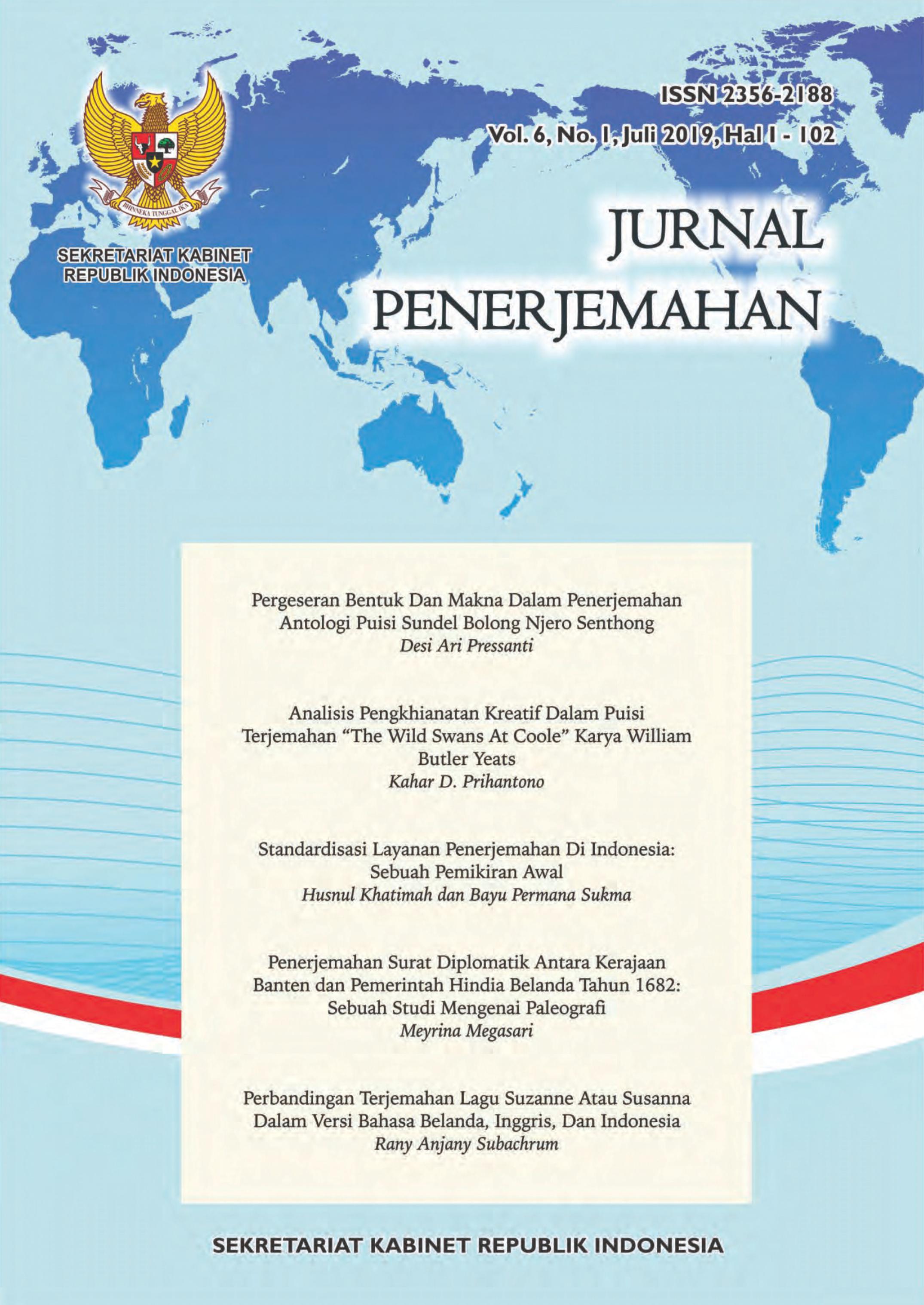Analisis Pengkhianatan Kreatif dalam Puisi Terjemahan “The Wild Swans at Coole” Karya William Butler Yeats
Abstrak
Pengkhianatan dalam penerjemahan mengandung makna tindakan penerjemah melakukan penerjemahan menembus belenggu bahasa asli dan melakukan terjemahan yang paling mendekati karakteristik bahasa sasaran. Kreatifitas mencerminkan upaya subyektif penerjemah untuk memahami dan mereproduksi teks asli dengan kemampuannya menciptakan pola artistik sendiri. Artikel ini berusaha menganalisis terjemahan puisi “The Wild Swans at Coole” karya penyair Irlandia peraih Nobel Kesastraan tahun 1946 William Butler Yeats dari perspektif pengkhianatan kreatif dalam penerjemahan yang mencakupi tiga aspek: pelokalan dan pengasingan, penerjemah individual terjemahan; penghilangan; terjemahan singkat dan adaptasi. Penelitian ini menggunakan metode deskriptif kualitatif dengan pendekatan creative treason Tianzhen (2017). Hasil penelitian menunjukkan bahwa baik Ikranagara maupun Asrowi sama-sama menerapkan pengkhianatan kreatif dalam unsur-unsur pembangun puisi, yakni dalam tataran tipografi, bunyi, diksi, dan retorika. Bentuk pengkhianatan yang dilakukan oleh kedua penyair penerjemah (poet translator) tersebut mencakupi penghilangan (omission), penerjemahan invividu-pelokalan, dan penerjemahan pendek yang mencerminkan gaya penerjemahan mereka.
Kata kunci: “The Wild Swans at Coole”; William Butler Yeats; terjemahan sastra; pengkhianatan kreatif, gaya

